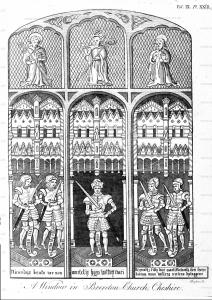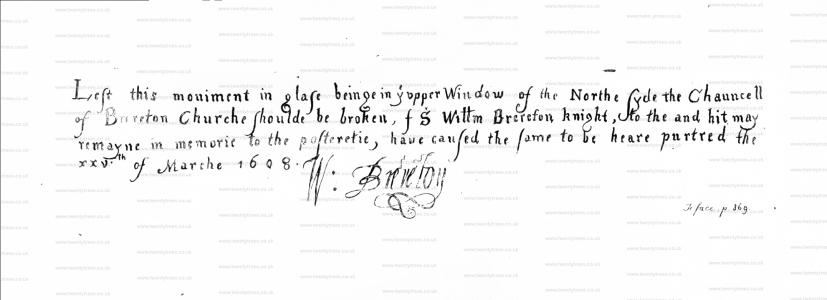Archaeologia Volume 9 Appendix
Archaeologia Volume 9 Appendix is in Archaeologia Volume 9.
Nov. 22, 1787.
Mr. Lyson's exhibited an urn taken out of a tumulus or barrow [Windmill Tump aka Rodmarton Long Barrow [Map]], in a field called Inlands, near Hazleden, in the parish of Rodmarton and county of Gloucester, in the year 1779. It was deposited in the centre of the tumulus, in a pentagonal cell about two feet five inches in depth, formed by five large hewn stones, over which was placed another very large stone to secure it.
The tumulus from the top of it to the level of the field in which it stood was somewhat more than ten feet in depth, and consisted of fine black earth mixed with wood ashes, except a stratum of rubbish twenty inches in depth from the top. In the urn was a considerable quantity of ashes and burnt bones.
Another smaller tumulus adjoining to the one above mentioned was also opened at the same time, in which the urn was not deposited in a cell, but buried in the earth, so that it could not be taken out entire. Such parts as could be preserved of it were exhibited, from which it appears to have been of the same kind as the preceding.
22 May 1788. Owen Salusbury Brereton (age 73), Esq. V. P. exhibited a beautiful coloured drawing of a window in the parish-church of Brereton [Map], one of the oldest in the county-palatine of Chester; but the date of it is not exactly known1. In the lower compartments are four figures representing the four persons who slew Thomas Becket at the high altar in Canterbury cathedral, 1170. They are in complete armour, with drawn swords in their hands, and on pendant scrolls are inscribed their names; William Tracy, Richard Britton, Reginald Fitzurse, and Hugh Morrel. A fifth figure, exactly correiponding with these, in the centre compartments, bears, on the like scroll, these words, Martyrum Thomam. In three compartments of the Upper division of the window are two priests [Note. In the original the word priests is crossed out, and the word "saints" written in the margin.] , and between them a figure episcopally habited, most probably intended for Becket himself. Under the five lower figures, after their names are these words tended for two hexameter lines:
Martyrum Thomam fieri fecere beatum
Anno milleno centeno septuageno.
[Note. The above two lines in Gothic script]
Under these the following inscription represented in the opposite page:
"Left this monument in Glase being in the upper window of the North syde the chauncell of Brereton churche shoulde be broken, I Sir Will’m Brereton, knight, to the end hyt may remayne in memorie to the posteritie, have caused the same to be heare purtred, the 25th of Marche, 1608. W. Brereton."
Note 1. See Pl. XXIII.


Sir William Brereton, who signs the writing, was lord of the manor, and built a noble house [Brereton Hall, Cheshire [Map]] close to it in 1579. He was the son of that William Brereton who was one of the persons put to death by king Henry VIII. as a pretence for his charge against his queen Anne Boleyn.
Note. This appears to be a mistake. William Brereton didn't have children. William Brereton 1st Baron Brereton, the building of Brereton Hall, was the son of William Brereton.
This Sir William was knighted by Queen Elizabeth, and made one of her Gentlemen Ushers. An original picture of him, with the Queen’s head on the front of his cap, is now in the possession of Owen Salusbury Brereton (age 72), esq.